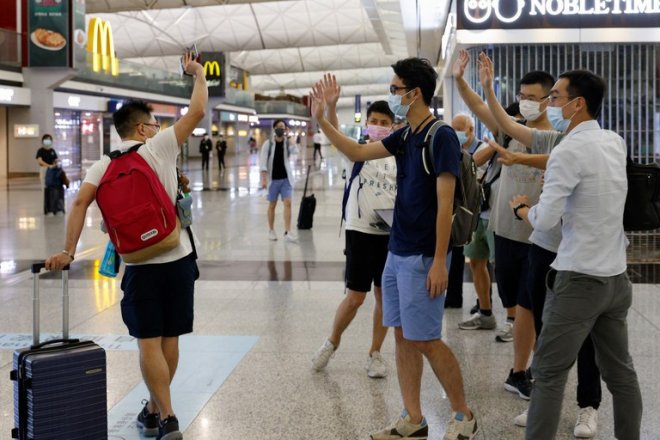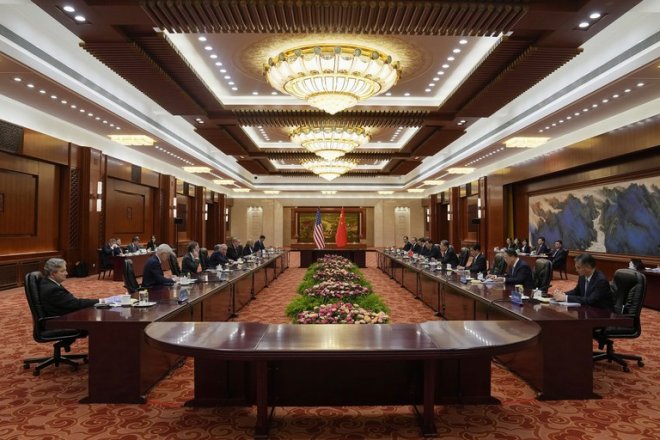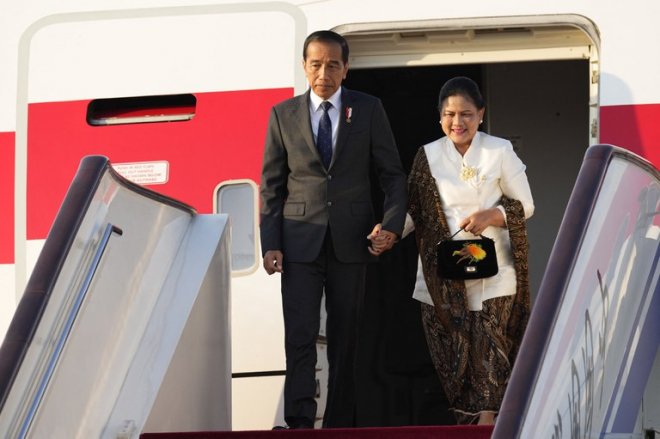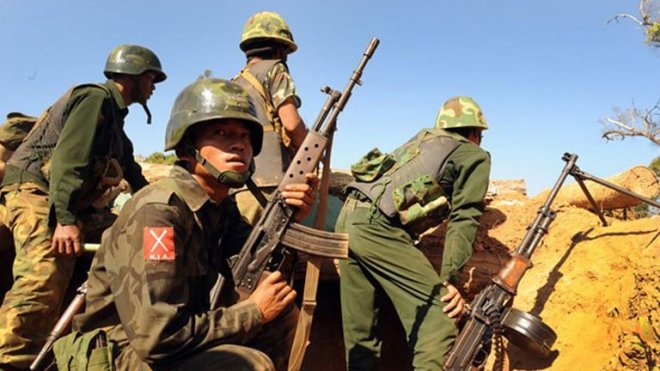Han Chinese migrants stream home from Lhasa, causing traffic jams
Han Chinese migrant workers are streaming out of Lhasa after demanding permission to return to their homes amid a harsh COVID-19 lockdown in the Tibetan capital, creating snarled traffic jams as far as the eye can see, Radio Free Asia’s Tibetan service has learned.
Protests broke out in Lhasa on Wednesday over COVID-19 restrictions in the city and had spread to at least four different districts by Thursday, prompting scuffles with authorities in some cases. RFA was able to confirm that many of the protesters were ethnic majority Han Chinese migrant workers who likely obtained permission to reside in Lhasa for jobs that pay daily wages, but have been unable to earn a living during three months of lockdown in the city.
Sources told RFA that the protests – believed to be the largest in Lhasa in nearly 15 years – had largely dispersed by the end of the day on Thursday after officials agreed to begin processing requests by migrant workers to leave the region for their homes in eastern China.
On Friday, RFA obtained video showing migrant workers leaving en masse, resulting in bumper-to-bumper traffic on the few routes leading east out of the city.
In one video, a man can be heard saying that he and others began their drive eastwards at around 10:00 p.m. on Thursday, but hadn’t even made it to the outskirts of Lhasa well into Friday.
Many Chinese migrant workers and other daily wage earners travel to Tibet during the summer months for jobs in construction, shops and restaurants. They regularly leave the region before the cold of winter starts to set in. Sources in Lhasa confirmed that the subjects of the videos obtained by RFA are migrant workers who had been unable to earn an income amid the harsh lockdown in the city.
In addition to Han Chinese migrant workers, Tibetans from outside Lhasa have also reported being refused the right to return to their homes from the city in recent weeks, and it was not immediately clear whether authorities might grant them similar permits.
Calls to authorities in Lhasa seeking comment on the state of the lockdown and whether Tibetan migrants would be allowed to return to their homes went unanswered Friday.
Getting permits
In a related development, authorities in the Tibetan town of Shigatse announced Wednesday that in order to obtain a permit to return to eastern China, applicants must submit requests one week before their intended departure and test negative for COVID-19 at least three times within 72 hours ahead of their trip.
Reports of the protests in Lhasa came days after the government of the Tibet Autonomous Region issued an Oct. 24 statement announcing that a harsh COVID-19 lockdown in Lhasa would be “loosened.”
The lockdown in Lhasa began in early August as COVID-19 numbers there and throughout China continued to climb.
Lhasa residents have said on social media that the lockdown order came without enough time to prepare, leaving some short on food, and making it difficult for those infected with the virus to find adequate treatment.
Formerly an independent nation, Tibet was invaded and incorporated into China by force more than 70 years ago, following which the Dalai Lama and thousands of his followers fled into exile in India and other countries around the world.
Beijing has accused the Dalai Lama of fomenting separatism in Tibet.
Translated by Kalden Lodoe. Written in English by Joshua Lipes.
[圖擷取自網路,如有疑問請私訊]
Protests broke out in Lhasa on Wednesday over COVID-19 restrictions in the city and had spread to at least four different districts by Thursday, prompting scuffles with authorities in some cases. RFA was able to confirm that many of the protesters were ethnic majority Han Chinese migrant workers who likely obtained permission to reside in Lhasa for jobs that pay daily wages, but have been unable to earn a living during three months of lockdown in the city.
Sources told RFA that the protests – believed to be the largest in Lhasa in nearly 15 years – had largely dispersed by the end of the day on Thursday after officials agreed to begin processing requests by migrant workers to leave the region for their homes in eastern China.
On Friday, RFA obtained video showing migrant workers leaving en masse, resulting in bumper-to-bumper traffic on the few routes leading east out of the city.
In one video, a man can be heard saying that he and others began their drive eastwards at around 10:00 p.m. on Thursday, but hadn’t even made it to the outskirts of Lhasa well into Friday.
Many Chinese migrant workers and other daily wage earners travel to Tibet during the summer months for jobs in construction, shops and restaurants. They regularly leave the region before the cold of winter starts to set in. Sources in Lhasa confirmed that the subjects of the videos obtained by RFA are migrant workers who had been unable to earn an income amid the harsh lockdown in the city.
In addition to Han Chinese migrant workers, Tibetans from outside Lhasa have also reported being refused the right to return to their homes from the city in recent weeks, and it was not immediately clear whether authorities might grant them similar permits.
Calls to authorities in Lhasa seeking comment on the state of the lockdown and whether Tibetan migrants would be allowed to return to their homes went unanswered Friday.
Getting permits
In a related development, authorities in the Tibetan town of Shigatse announced Wednesday that in order to obtain a permit to return to eastern China, applicants must submit requests one week before their intended departure and test negative for COVID-19 at least three times within 72 hours ahead of their trip.
Reports of the protests in Lhasa came days after the government of the Tibet Autonomous Region issued an Oct. 24 statement announcing that a harsh COVID-19 lockdown in Lhasa would be “loosened.”
The lockdown in Lhasa began in early August as COVID-19 numbers there and throughout China continued to climb.
Lhasa residents have said on social media that the lockdown order came without enough time to prepare, leaving some short on food, and making it difficult for those infected with the virus to find adequate treatment.
Formerly an independent nation, Tibet was invaded and incorporated into China by force more than 70 years ago, following which the Dalai Lama and thousands of his followers fled into exile in India and other countries around the world.
Beijing has accused the Dalai Lama of fomenting separatism in Tibet.
Translated by Kalden Lodoe. Written in English by Joshua Lipes.
[圖擷取自網路,如有疑問請私訊]
|
本篇 |
不想錯過? 請追蹤FB專頁! |
| 喜歡這篇嗎?快分享吧! |
相關文章
AsianNewsCast




















